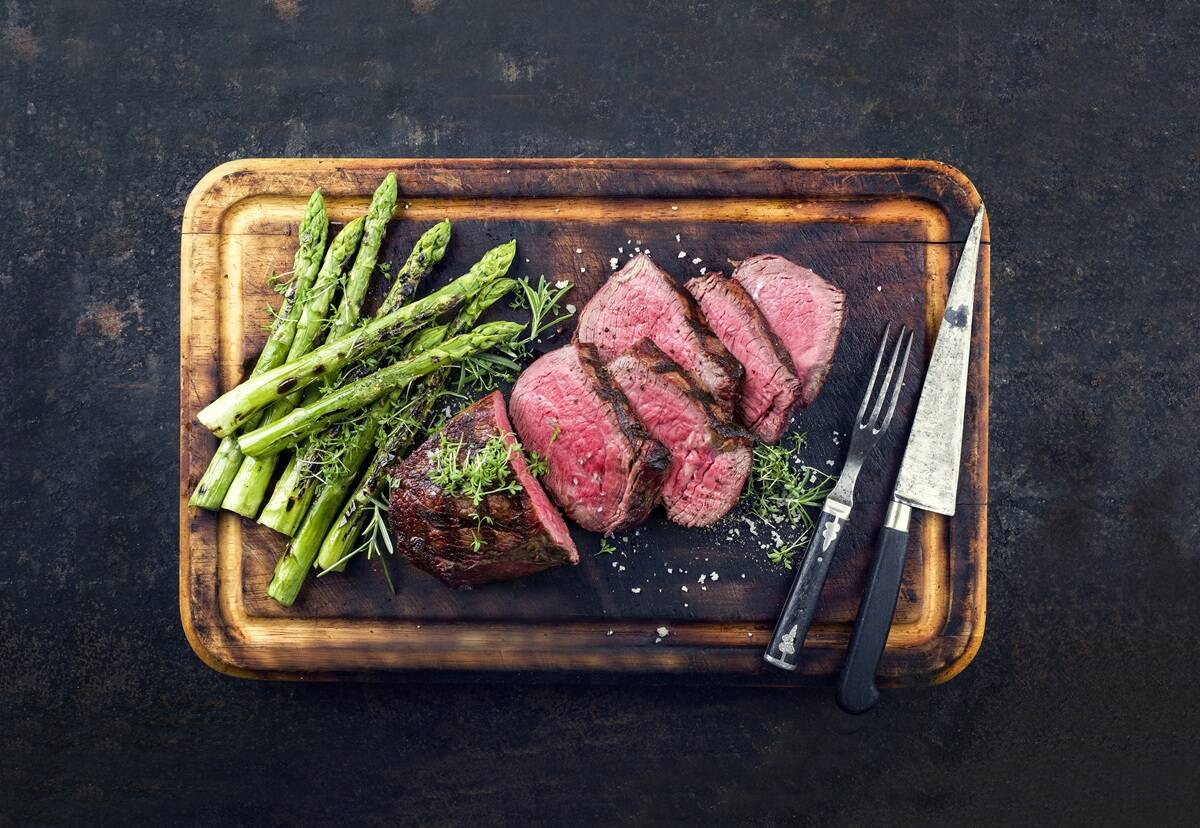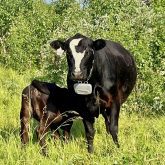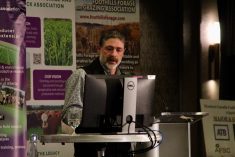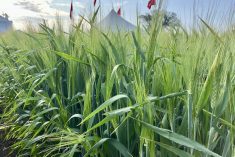There are many ways to grow or background calves after weaning and before finishing on grain. Cost, profit and impact on beef quality may vary however.
Those variables are being nailed down at the Western Beef Development Centre’s Termuende Research Ranch in Lanigan, Sask. Scientists there are in the midst of a three-year study of three backgrounding methods.
Steer calves from the centre’s 370-head black Angus cow herd were split into three groups of 40 and went onto a post-weaning diet of either grazed whole-plant corn or swathed barley, or barley hay in a dry lot for approximately 80 days. Then they were finished at the University of Saskatchewan’s feedlot and harvested at Cargill’s High River, Alta., plant.
Read Also

Building demand together: The impact of Canada’s beef import levy
The beef import levy has become a central tool for ensuring balance in Canada’s beef industry
“The idea of backgrounding is to grow the animal’s frame out, then worry about putting them on a more nutrient-dense diet in the feedlot phase,” says Dr. Bart Lardner.
He and graduate student Stephanie McMillan aim to find which program provides the highest carcass value for the least input cost. Carcass data will be the biggest indicator of performance, Lardner says.
The first set of calves provided a peek at the work in progress, with an overall average of 46 per cent qualified for a Certified Angus Beef (CAB) brand. Similar marbling was achieved by calves that grazed whole-plant corn and those grown on barley hay, with 55 per cent of each assigned marbling scores of Modest or higher.
Steers that grazed swathed barley later featured the least marbling, though 43 per cent made CAB and its minimum Modest marbling. Eight per cent were AA and Select Angus, compared to five or six per cent for the other groups.
The dry lot treatment, which Lardner calls typical, saw calves gaining nearly 2.0 pounds per day. The extensive programs showed slightly lower gains between 1.5 and 1.8 pounds per day. Calves in all three groups get five pounds per head per day as a supplement.
“Energy is a limiting nutrient up in the cold months in Western Canada,” he says. “You want to provide additional supplement to these growing calves, especially in extensive field grazing.”
The centre’s mixed breed herd was dispersed seven years ago and replaced with a single breed in 2008.
“We purchased purebred Angus cattle from about a dozen different breeders around Saskatchewan, Manitoba and Alberta,” says Paul Jefferson, vice-president of operations. “The purpose of this new herd was to allow us to have a purebred herd and to do some genetics research as well as our production, grazing and nutrition research.”
Joint funding for the new herd came from Agriculture and Agri-Food Canada, and the Saskatchewan Ministry of Agriculture.
All cattle are sold as commercials so as not to compete with registered seedstock producers.
“We’re really an applied beef research facility,” says Lardner, who is also an adjunct professor of animal and poultry science at the University of Saskatchewan.
New grazing and feeding techniques can help lower costs or hit a targeted daily gain, “so the results of what we do can hopefully be integrated by producers as soon as possible,” he says.
Jefferson says this backgrounding project, funded by the province’s Agriculture Development Fund and Alberta Livestock and Meat Agency, is an example of whole-system analysis that will use data “to make more improvements on the feeding end.”
He notes the decision to go after this knowledge, much like the one to switch to Angus cows, was largely based on deliberations of an advisory committee. Made up of one-quarter academia and three-quarters producers or industry group representatives, the committee meets biannually.
Higher grain and other costs were a large motivation to pursue this research, Lardner says. “It’s certainly showing the benefits of the breed, but it’s also showing the alternative programs for cattle producers where they can maintain a high level of performance.”
















